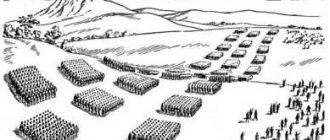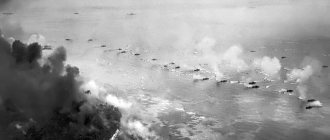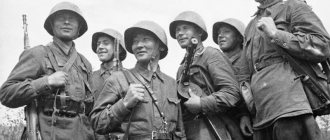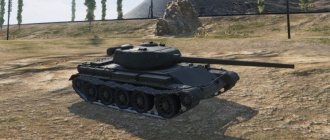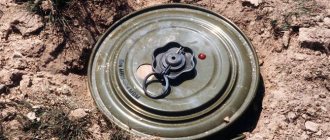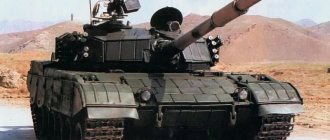Main menu
Share the news with your friends
In battle, it is necessary to evaluate the actual effect achieved by fire - the destruction of an enemy group/unit or the suppression of its fire weapons and deprivation of the opportunity to maneuver. After the suppressive fire ceases, the enemy is usually able to return to approximately the same level of impact on our troops that he had before. Of course, suppressive fire can knock out individual enemy soldiers and destroy some of their firepower, but it cannot disable the enemy combat unit as a whole. The practical consequence of this is the following rule: suppressive fire should be carried out only when its effect can be at least somehow used during its execution or immediately after its termination; and the same rule stated from a slightly different point of view - while suppressive fire is being conducted, something must be done to exploit its effect. Otherwise, it is an ineffective waste of ammunition and chatter, affecting the enemy mainly only psychologically.
You cannot confuse the suppression of the enemy with the partial loss of his combat capability. If, let’s say, 20 or 30% of the enemy’s personnel are knocked out, this does not mean that he will not be able to conduct effective fire, and accordingly the enemy may not be suppressed, although the decrease in his combat effectiveness is obvious.
The infantryman must understand that the bulk of the fire brought down on the enemy only suppresses him, inflicting some losses on the enemy, but does not completely destroy him. Even artillery fire on enemy positions, as a rule, allows the enemy to restore the strength of his position after the shelling has ceased, especially if the artillery hits areas rather than trying to fire at previously exposed targets. Artillery is capable of destroying the enemy only when it is openly positioned.
Essentially, in most combat situations, for a specific weapon, destruction fire can only be considered shooting at short distances for a given type of weapon: 50-70 meters for machine guns, 100 meters for machine guns. Material from the Unfair Advantage community. For artillery, this distance is measured in hundreds of meters, but not in kilometers. That is, this is such a distance when a bullet or shell practically cannot miss or miss the target. And only long-term and/or concentrated firing at long distances can make shooting from this type of weapon a fire of destruction. The effective fire range figures given in the manuals can be taken into account only in cases where the enemy is in an ideally covered and observed area, that is, in conditions like a target at a shooting range. At medium and long distances for this type of weapon, the effect of shooting for the most part will only be suppression of the enemy.
The range of effective fire increases slightly when conducting concentrated fire from an entire unit at one target using the “heap on one” principle. But even concentrated fire from a certain range becomes only suppressive fire.
If the tactical situation says that it is impossible to use suppression of the enemy or it is pointless and will not give any tactical effect, it is better not to fire at all, or to fire infrequently harassing fire. The latter does not even suppress the enemy, although it somewhat constrains his actions. The same rule, stated from the point of view of someone who has come under fire: if the enemy is firing suppressing fire, but obviously will not be able to take advantage of its effect, then such fire need not be returned.
You also don’t have to respond to harassing fire if you come under fire. This shelling is relatively harmless and the response to it will only reveal the location of our fire weapons to the enemy, and will not have a significant impact on the battle. It is recommended to respond only to effective enemy fire. Of course, depending on the situation, a decision may be made to take cover from effective enemy fire (for example, during shelling), but this should not be allowed to ultimately lead to passivity and inaction.
One of the “non-statutory” types of combat—combat to deplete the enemy’s ammunition—is based on a misunderstanding of the difference between suppressive fire and destruction fire.
Its essence is as follows. One of the sides, which has more ammunition or a better ammunition system, fires at the enemy from a distance when the enemy's return fire will not be able to complete the tasks of destroying the attackers. The enemy is lured into conducting a full-fledged fire battle. Psychologically, I want to respond with fire of the same intensity. If this is successful, the enemy begins to quickly consume ammunition and does this until his ammunition runs out. And only after this, the side with the best ammunition approaches and destroys the practically helpless enemy. Often, only after the ammunition is close to exhaustion does the enemy try to leave the battle (break out of the encirclement, retreat).
The side with the best ammunition tries to use this attempt to destroy the enemy. In a situation where the attacker has a clear advantage in ammunition, it is more correct to respond with intense fire only directly to the attack of the occupied position, and the rest of the time to conduct rare harassing fire.
Related publications:
Solo job: Entering the door while clearing a building
Patrolling and pursuing the enemy
Blocking a populated area (object, site, area)
History[edit]
The First World War marked dramatic changes due to the development of artillery technology and the protection provided by trenches. By late 1915, the British Expeditionary Force realized that the impact of artillery fire could not breach the German trenches or reliably destroy enemy artillery at critical moments. Therefore, they developed artillery techniques to suppress the enemy in the trenches to allow their infantry to close in on them, and to suppress enemy artillery at critical stages to protect the attacking infantry. [3] After this, suppression became a defining British artillery tactic, although it was first used in the Boer Wars. A moving barrage could suppress a front line, providing covering fire for an attack several miles wide. Shrapnel was a common ammunition used by the British Army in barrages. Suppressive fire was provided by enemy artillery, which attacked the assaulting troops from indirect positions.
Infantry tactics also evolved, and suppression became a key element in "winning the skirmish." This was greatly facilitated by the increased availability of machine guns before the First World War and after. However, direct fire weapon suppression of infantry is usually only tactically useful against targets that are not mutually supported from adjacent positions, and ammunition supplies may only be available for several minutes of continuous fire.
During amphibious assaults during World War II, naval warships fired their main armament at known or suspected enemy artillery, mortar, or machine gun positions, on or behind the landing beaches, in order to suppress enemy fire from those positions that might have been directed against landing troops. [4] The increase in the massive use of aircraft and air attacks has also led to bombing and strafing, which serve as a frequently used means of suppressing enemy forces, disrupting enemy lines while inflicting heavy damage on them. concentrated fire from machine guns and/or portable explosives to destroy entire areas of territory. Fire bombs were also used for suppression, area limitation, and broad psychological effects. The Vietnam War and the common use of napalm contributed to this concept.
Excerpt characterizing Suppressive Fire
Nikolushka cried from the painful bewilderment that tore his heart. The Countess and Sonya cried out of pity for Natasha and that he was no more. The old count cried that soon, he felt, he would have to take the same terrible step. Natasha and Princess Marya were also crying now, but they were not crying from their personal grief; they wept from the reverent emotion that gripped their souls before the consciousness of the simple and solemn mystery of death that had taken place before them. The totality of causes of phenomena is inaccessible to the human mind. But the need to find reasons is embedded in the human soul. And the human mind, without delving into the innumerability and complexity of the conditions of phenomena, each of which separately can be represented as a cause, grabs the first, most understandable convergence and says: this is the cause. In historical events (where the object of observation is the actions of people), the most primitive convergence seems to be the will of the gods, then the will of those people who stand in the most prominent historical place - historical heroes. But one has only to delve into the essence of each historical event, that is, into the activities of the entire mass of people who participated in the event, to be convinced that the will of the historical hero not only does not guide the actions of the masses, but is itself constantly guided. It would seem that it is all the same to understand the significance of the historical event one way or another. But between the man who says that the peoples of the West went to the East because Napoleon wanted it, and the man who says that it happened because it had to happen, there is the same difference that existed between the people who argued that the earth stands firmly and the planets move around it, and those who said that they do not know what the earth rests on, but they know that there are laws governing the movement of it and other planets. There are no and cannot be reasons for a historical event, except for the only cause of all reasons. But there are laws that govern events, partly unknown, partly groped by us. The discovery of these laws is possible only when we completely renounce the search for causes in the will of one person, just as the discovery of the laws of planetary motion became possible only when people renounced the idea of \u200b\u200bthe affirmation of the earth.
Weapons used[edit]
Two U.S. Marines provide covering fire with an M4 carbine and an M203 40mm grenade launcher while a U.S. Air Force Signal Company Marine locates targets in Ramadi, Iraq, 2006.
Map of artillery barrages during the Second Battle of Passchendaele (1917), showing creeping fire to defend the advance.
Suppressive fire can be fired from any weapon or group of weapons capable of providing the required intensity for the required period of suppression. Suppressive fire can be direct or indirect. However, the suppressive fire capabilities of different types of weapons differ, primarily in the size of their suppressive impact area.
Indirect fire weapons[edit]
There are several options for using artillery (as well as mortar and naval guns) fire for suppression. During World War I, moving barrage was a common method; Fragmentation shells were fired to keep their bullets ahead of advancing infantry, and their sights moved 100 yards forward every few minutes over a front of several kilometers to support an attack by several divisions or corps. High explosive barriers were also used in World War II, including to cover the advance of tanks by suppressing anti-tank gunners.
However, concentrations of HE against specific targets became more common and gradually replaced barrage. In concentration, fire begins when the attacking forces become vulnerable to the target, and breaks away from the target when the attacking forces reach an agreed distance from it. The suppression effect lasts for a short time, about 2 minutes, after the artillery fire stops.
An overwhelming concentration with a single battery can suppress a position approximately 250x250 meters in size and can be used to support a platoon or company attack against one or more targets. For larger operations, many batteries can be deployed against many targets and shift their fire to different targets as the operation progresses.
Although HE is most often used for suppression, smoke screens can also be used for suppression by obscuring the enemy's view, this is effective against an enemy with direct fire weapons. Modern smoke is impervious to modern thermal imaging scopes. In peacekeeping operations, parachute flare illumination was used to prevent belligerent actions.
For artillery batteries, the last task a forward observer can call upon is "immediate suppression". This orders each gun in any corresponding battery to fire immediately, regardless of which shell and fuse is loaded, perhaps from someone else or from multiple call signs. The FO can end up getting white phosphorus illumination, DPICM and VT-HE rounds on the target in a single shot.
Direct fire weapons[edit]
The foreman of a US Navy special warfare ship, 22nd Special Warfare Group, conducts training.
A bullet from a rifle or machine gun has a suppressive effect only within one meter of its trajectory. However, both can be used to suppress an enemy in a small area, often referred to as "winning a gunfight."
Machine gun fire is also available from armored fighting vehicles and aircraft, especially helicopters and possibly fixed wing aircraft such as the AC-130. Fire from automatic cannons (20-40 mm) or grenades is also possible, as is fire from larger direct fire systems such as tanks. However, limited ammunition capacity means that such systems are better suited for destructive fire against precisely identified targets unless the required period of suppression is short.
In Afghanistan, the mujahideen often modified RPG-7 grenade launchers for use against Russian helicopters by adding a curved tube to the end of the blast tube that deflected the back blast, allowing the RPG to be fired up the aircraft from a prone position. At the time, Soviet helicopters countered the threat from RPGs in landing zones by first neutralizing them with anti-personnel suppression fire from machine guns.
The Russians used the Dragunov sniper rifle at the platoon level to provide special long-range destructive and suppressive fire on the battlefield, even in the face of surprise encounters with enemy troops.
